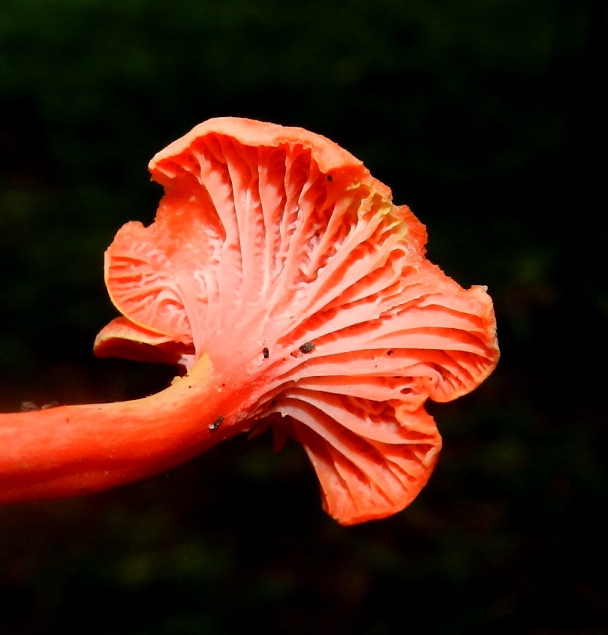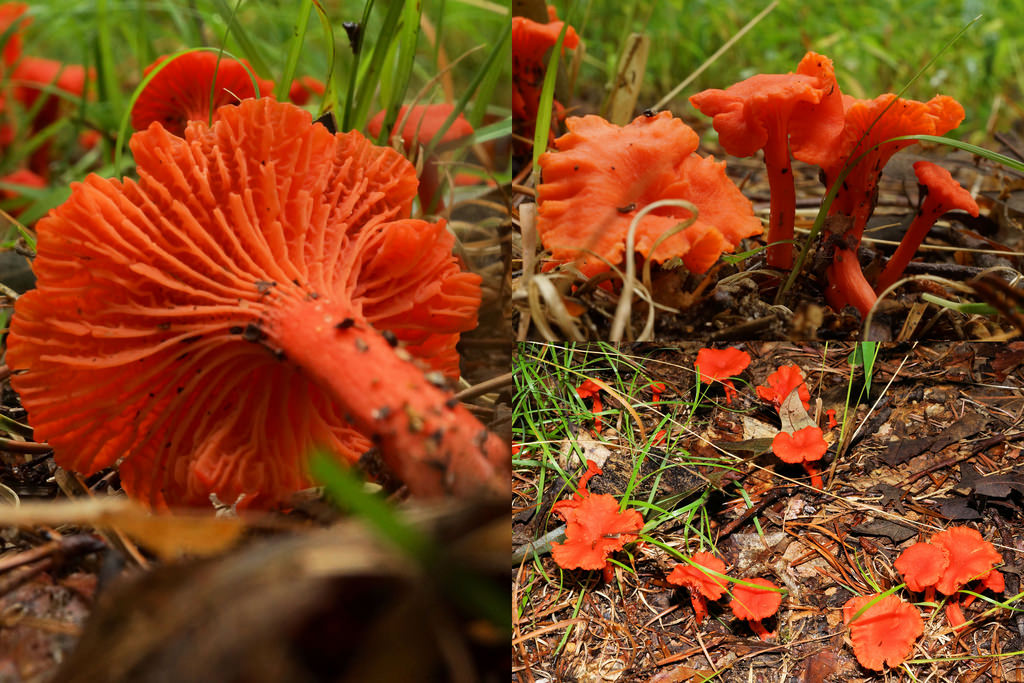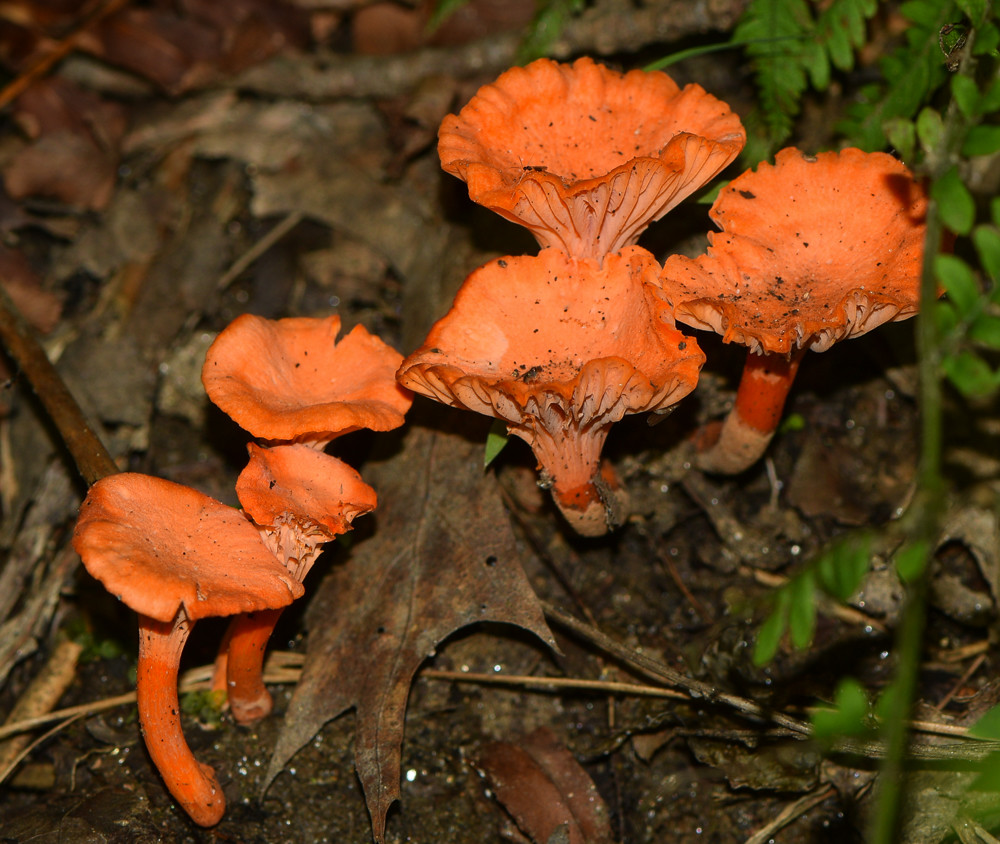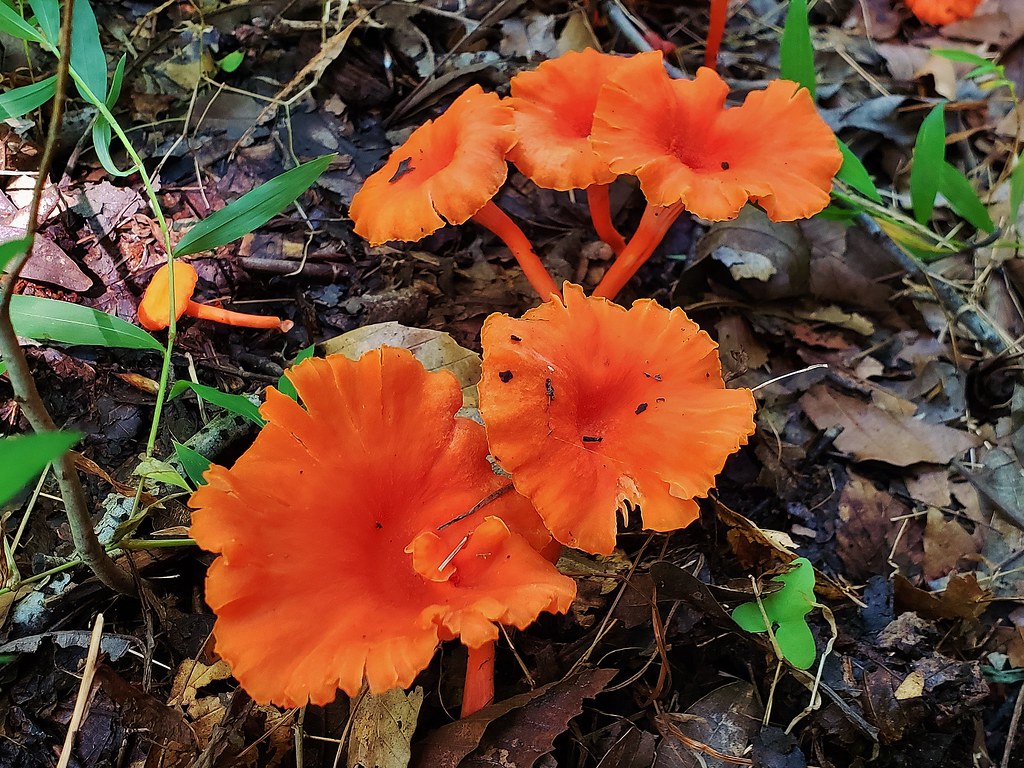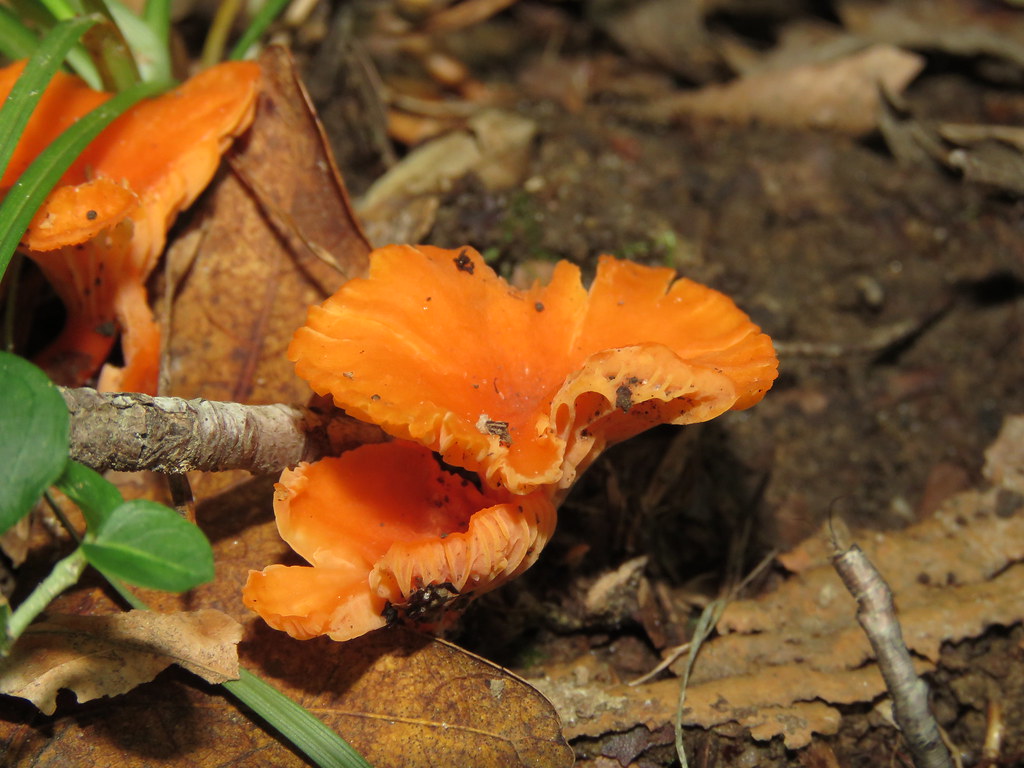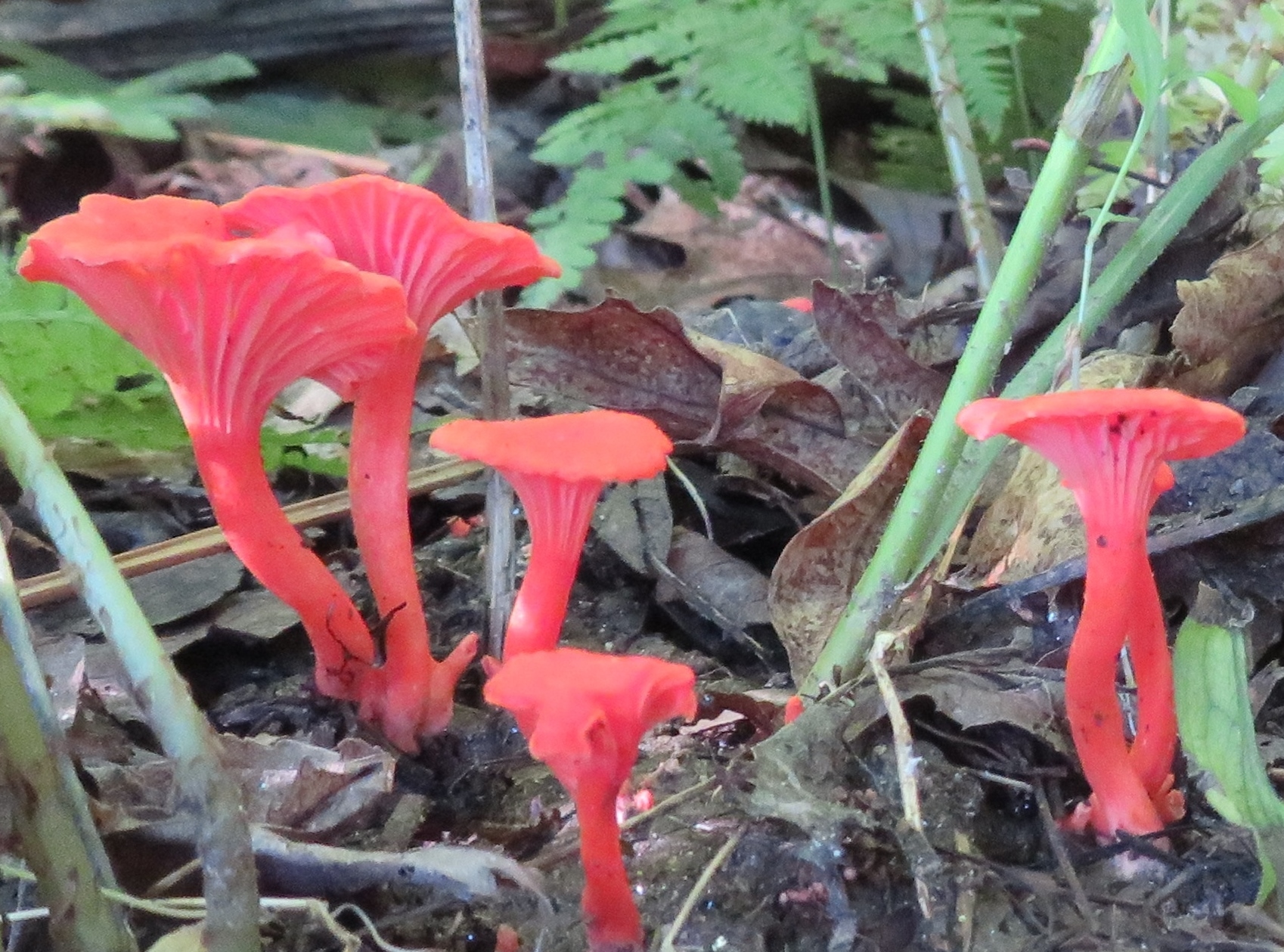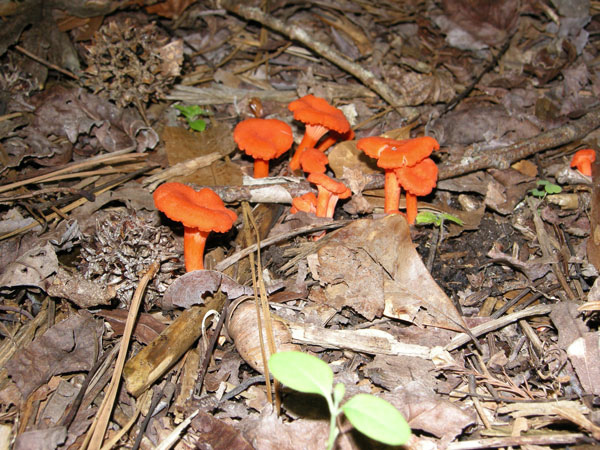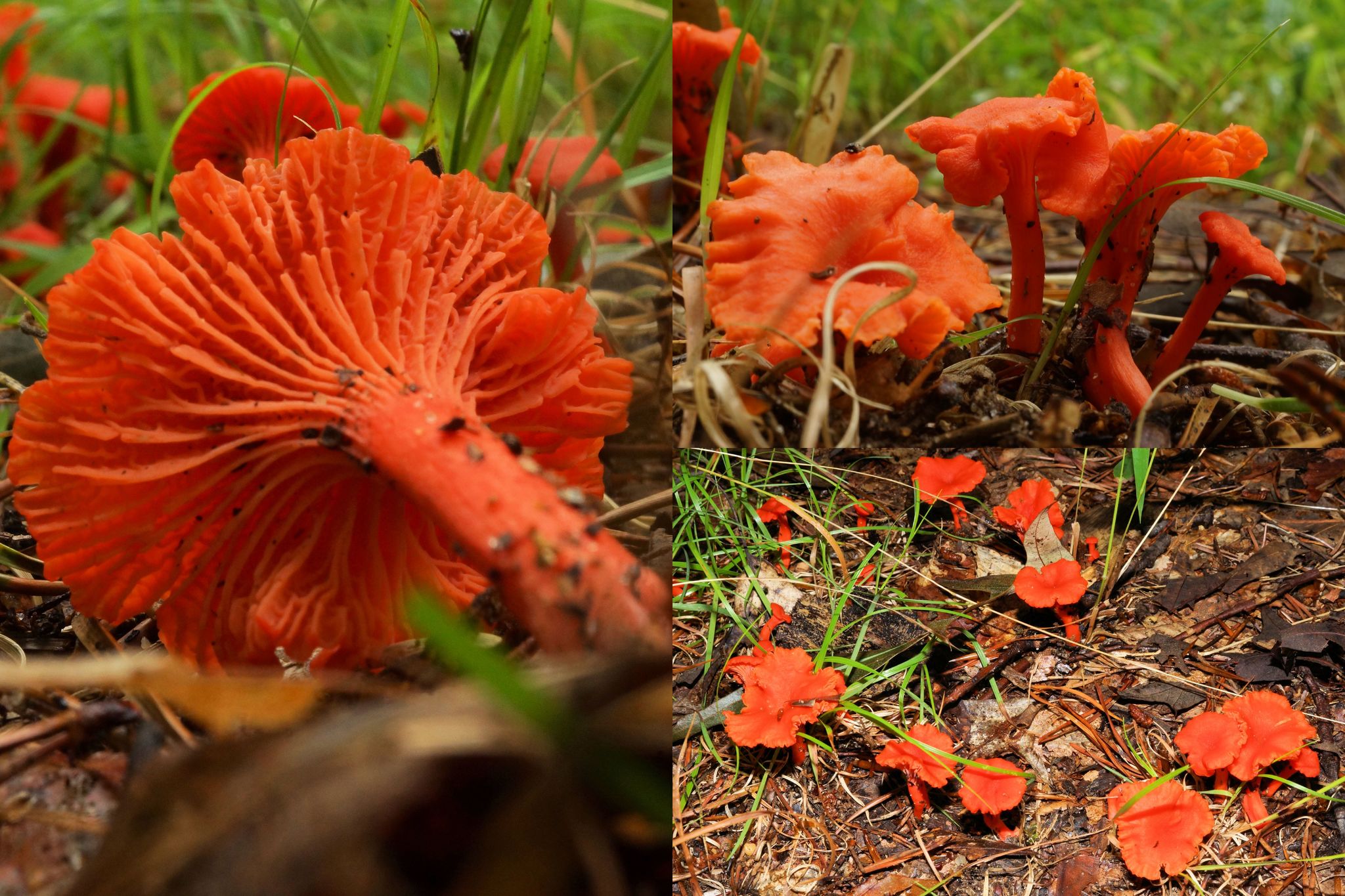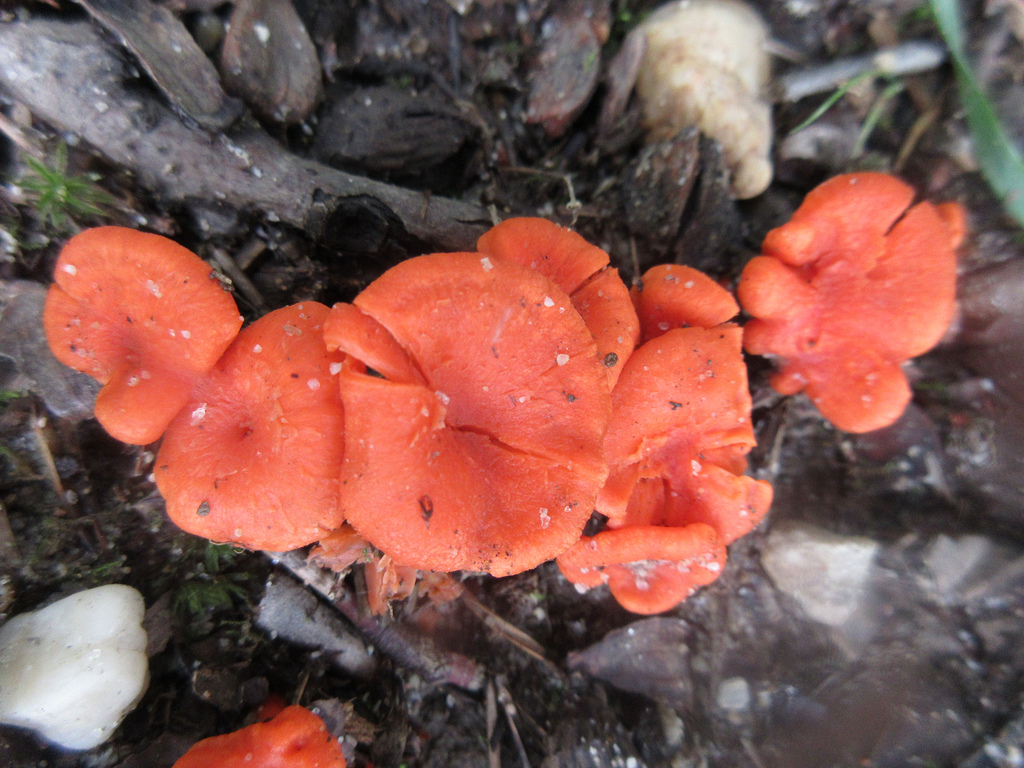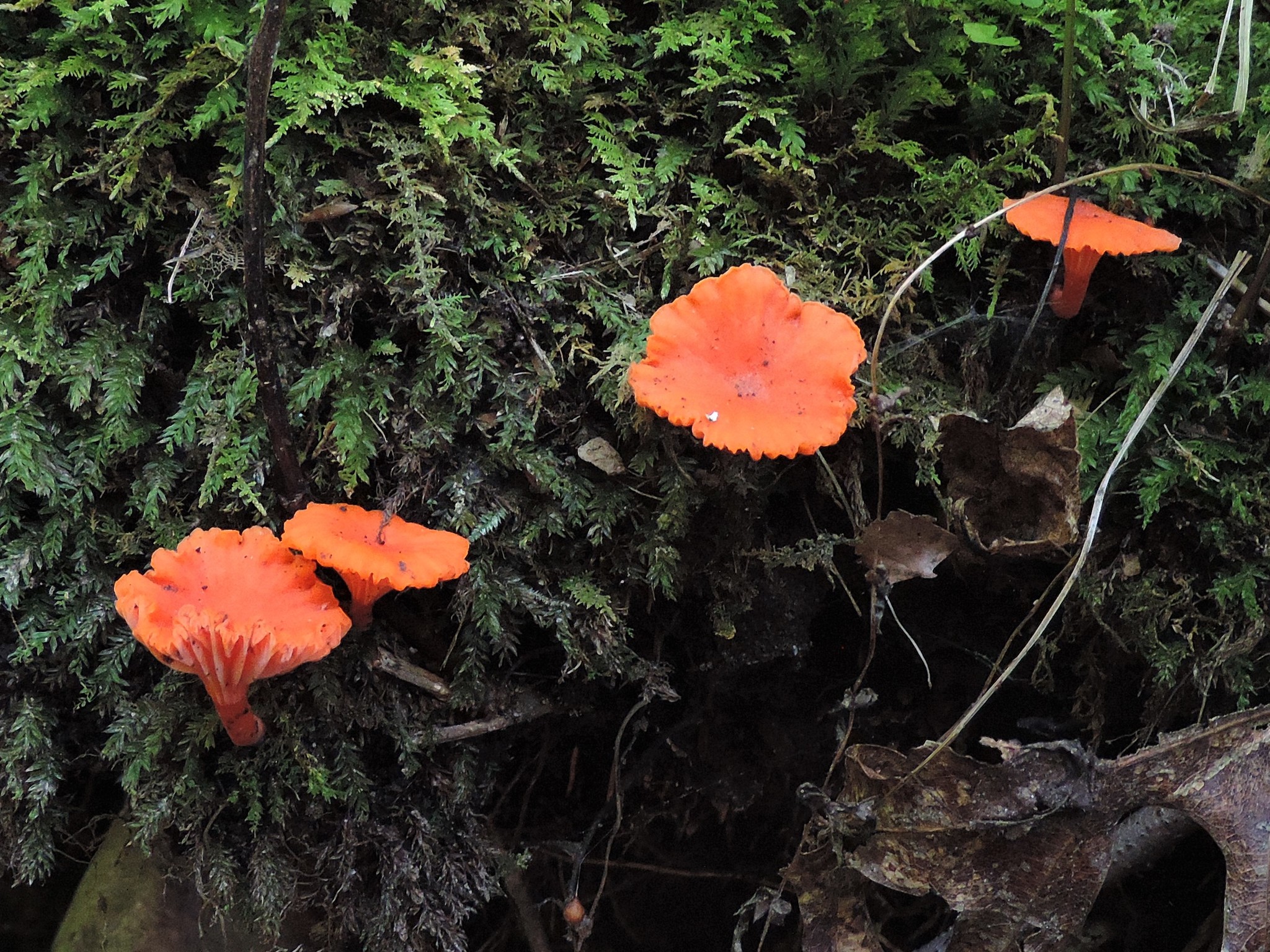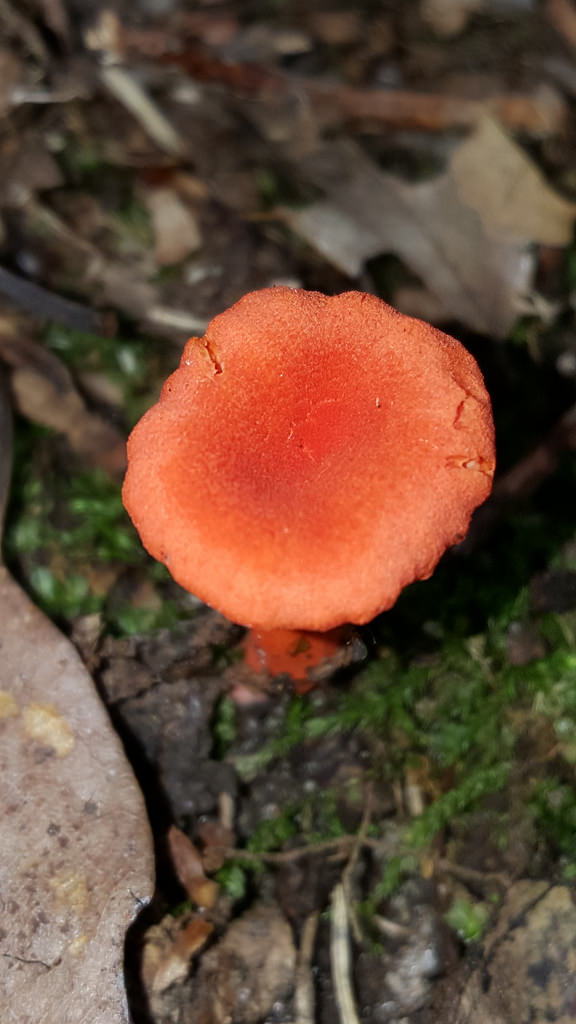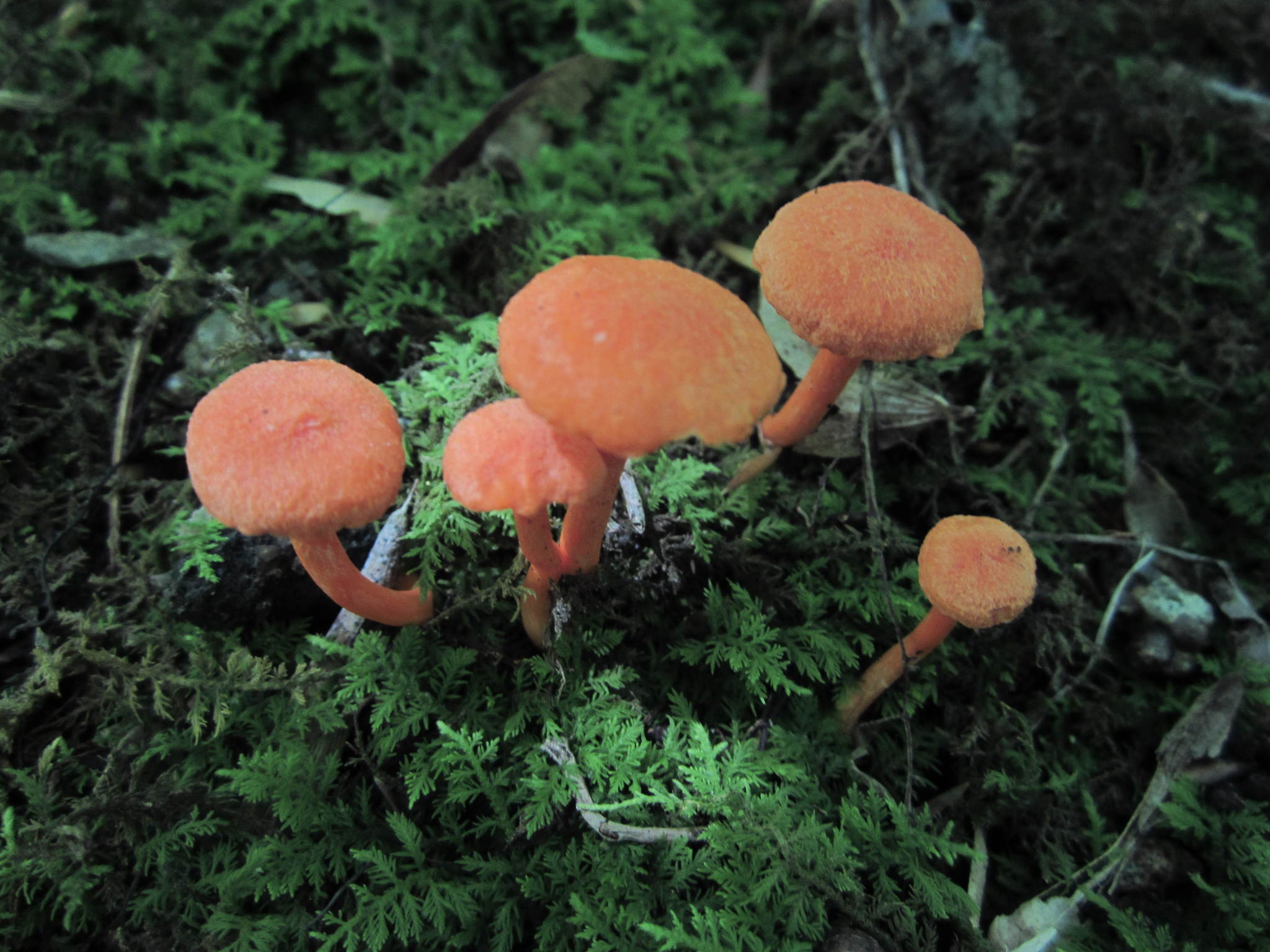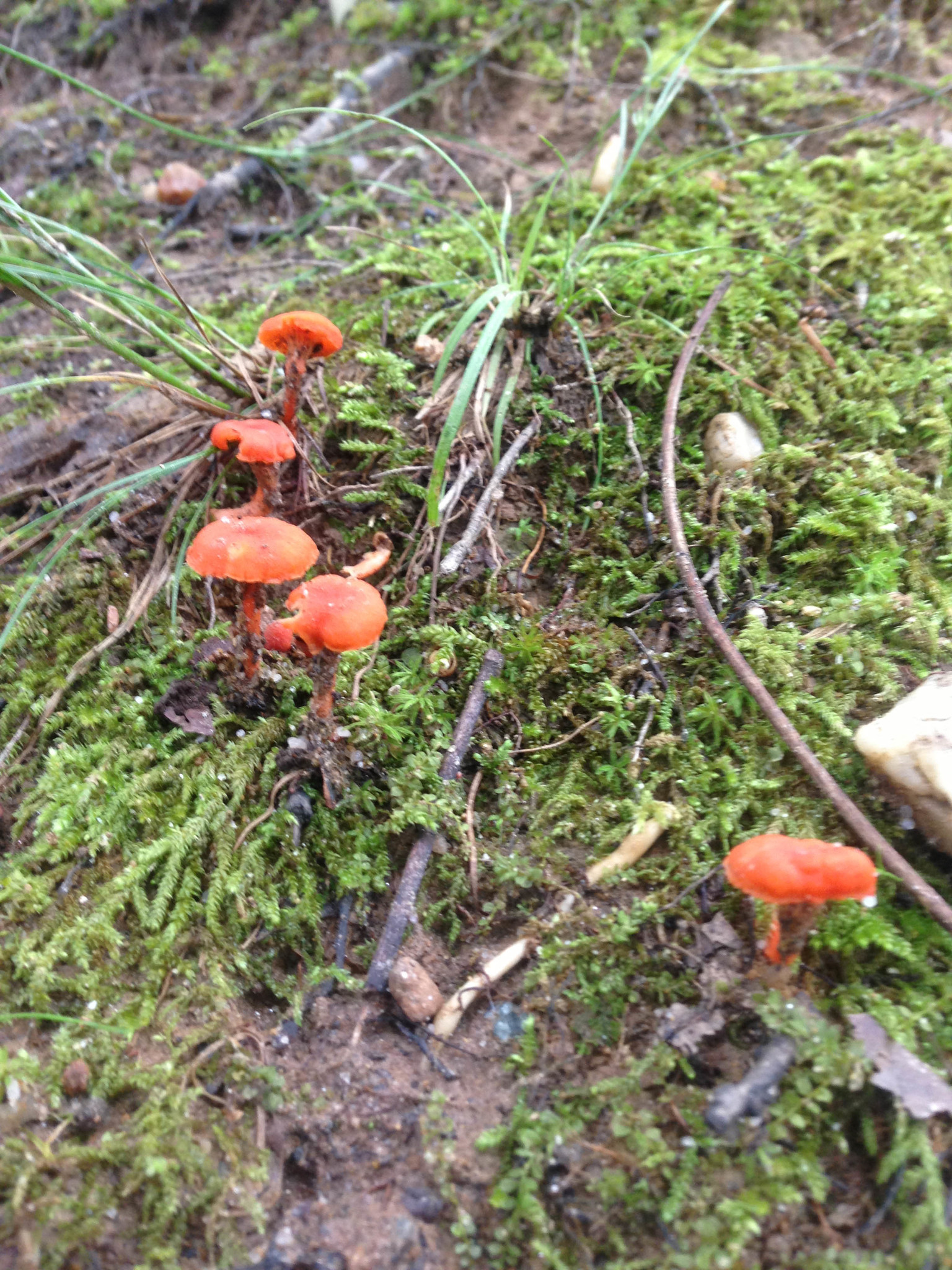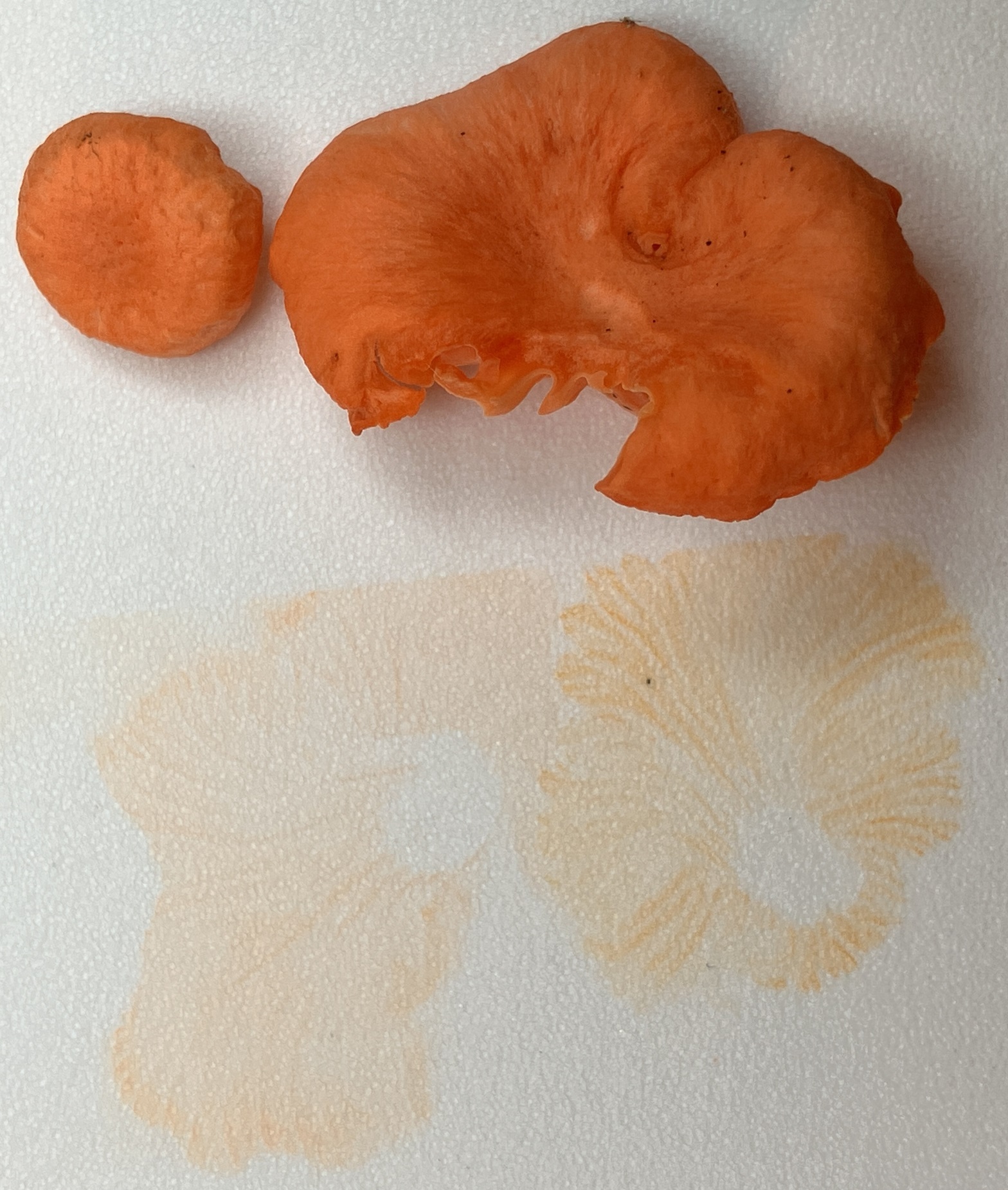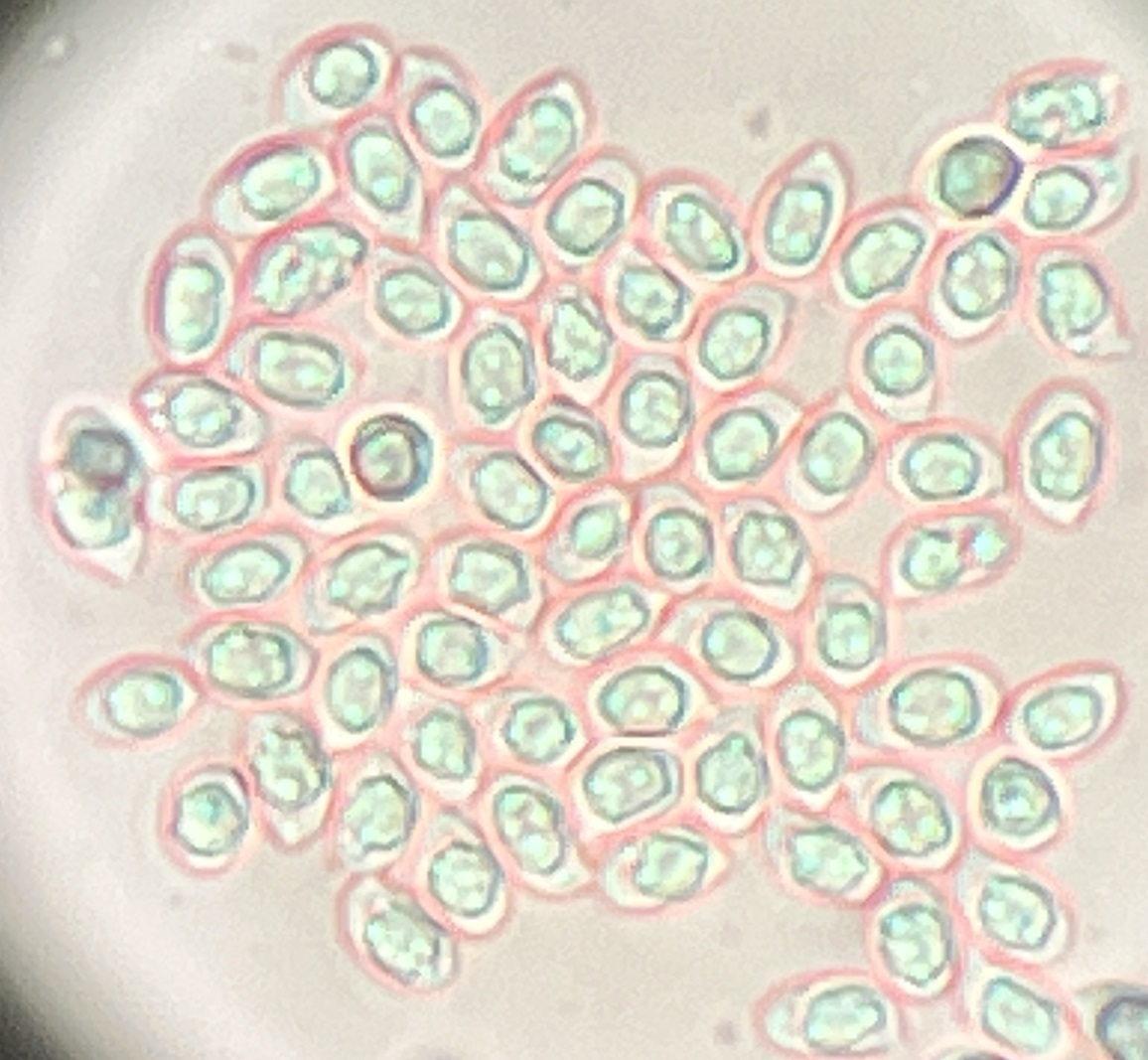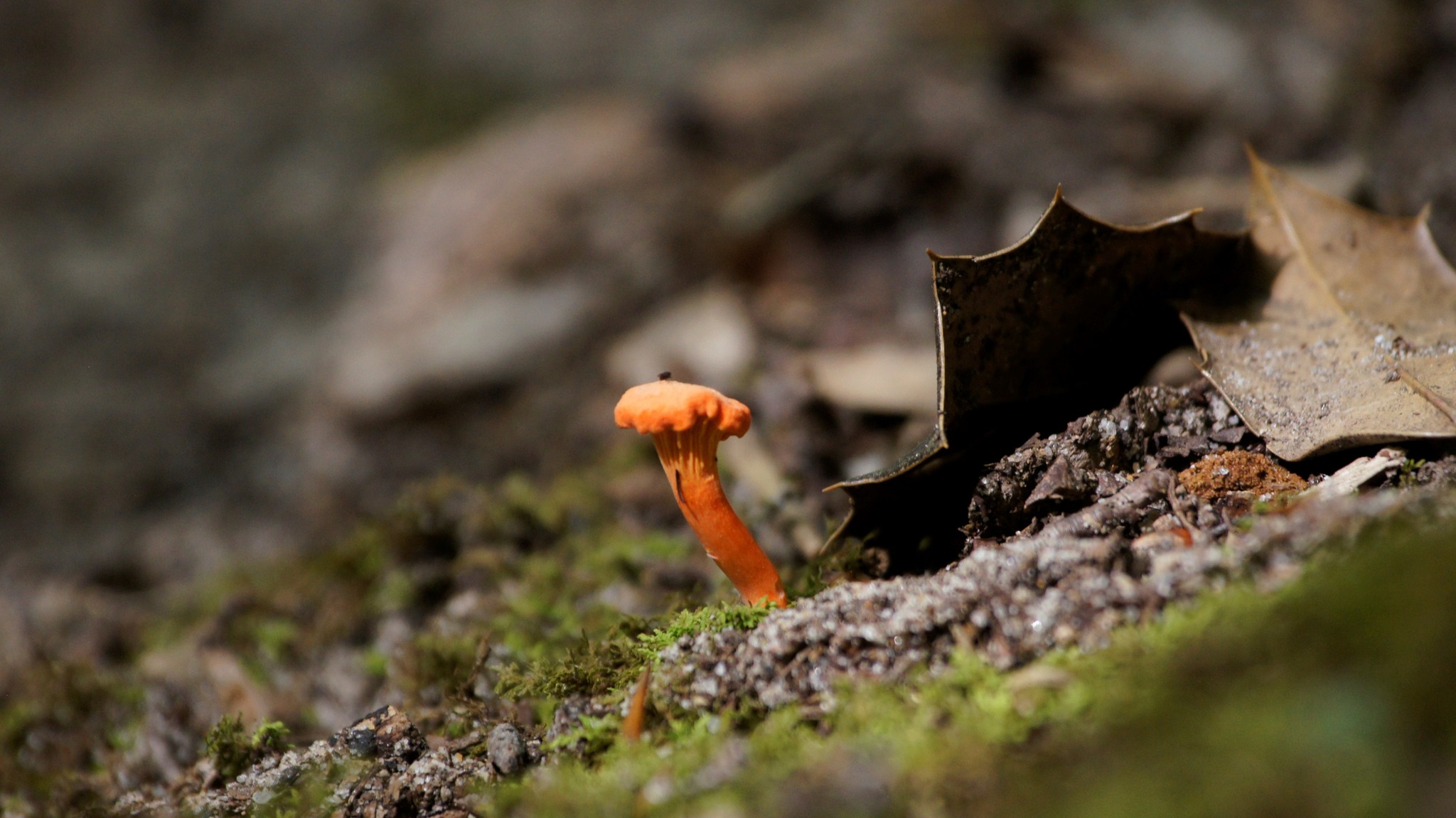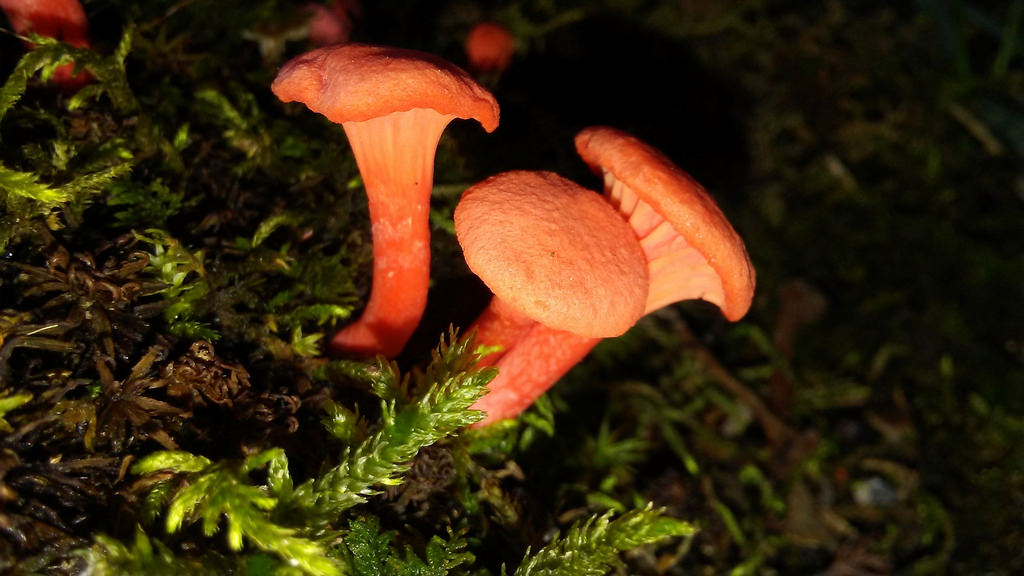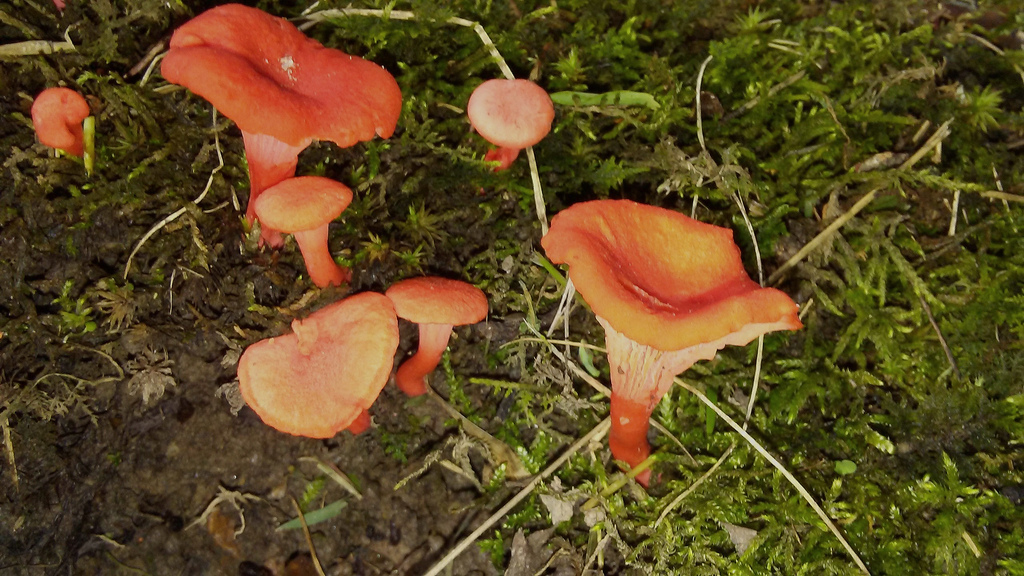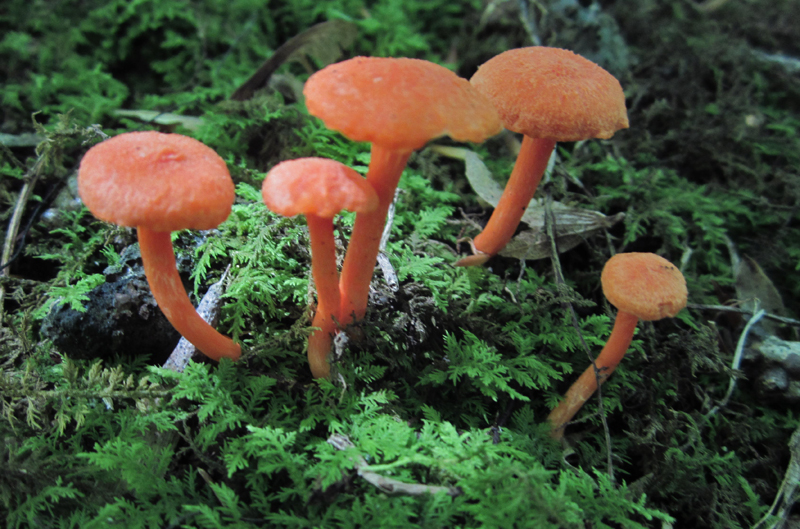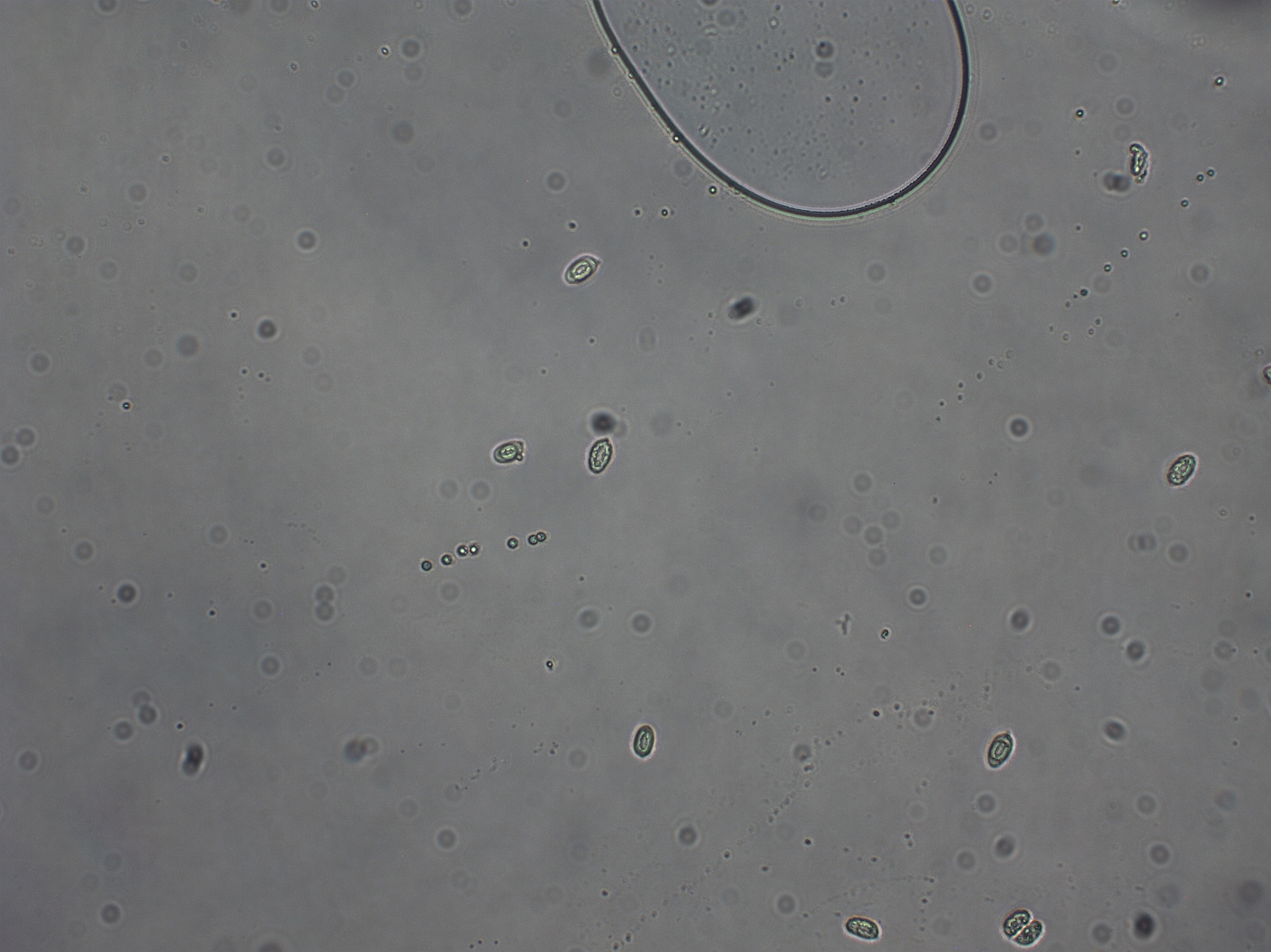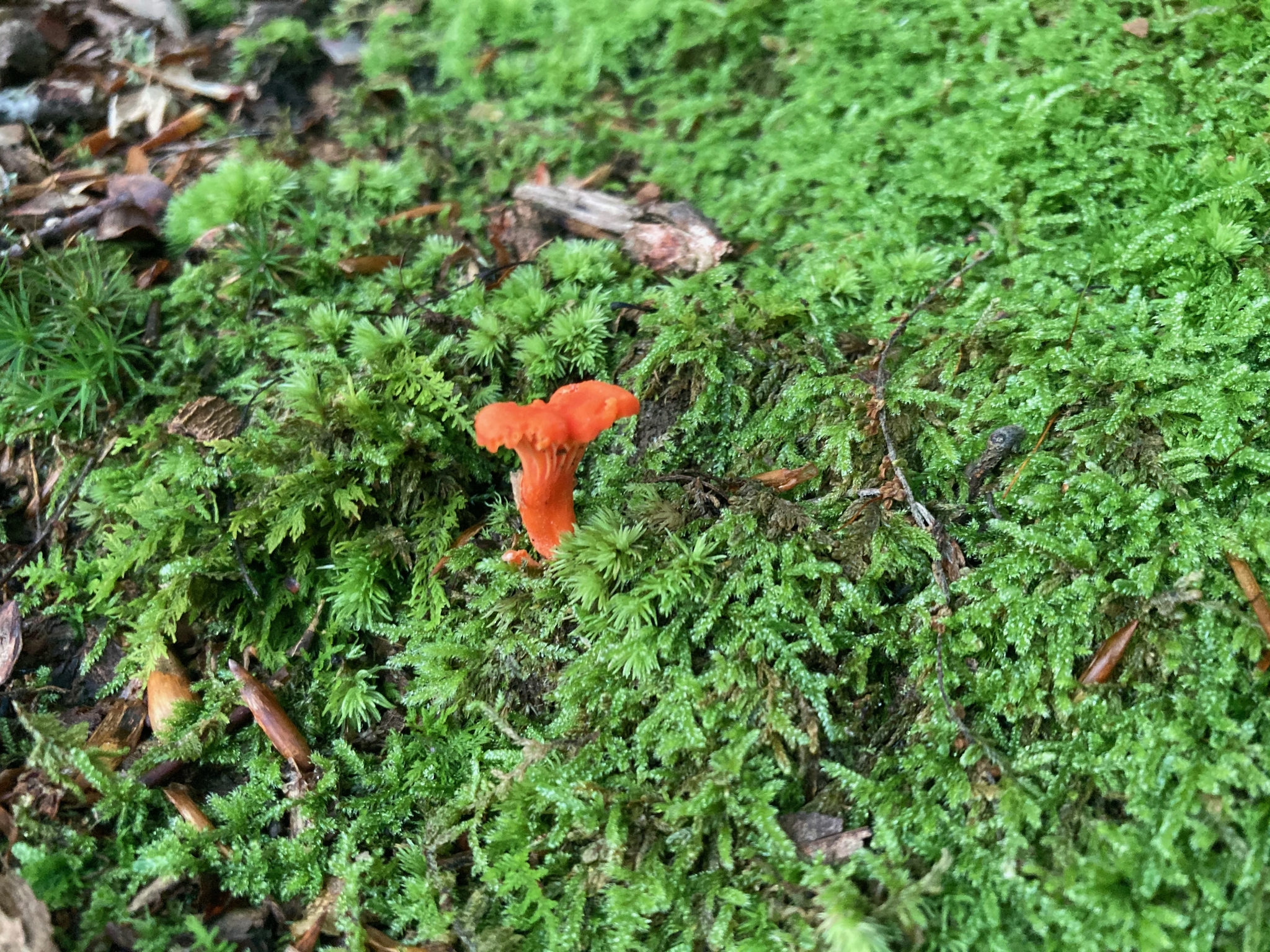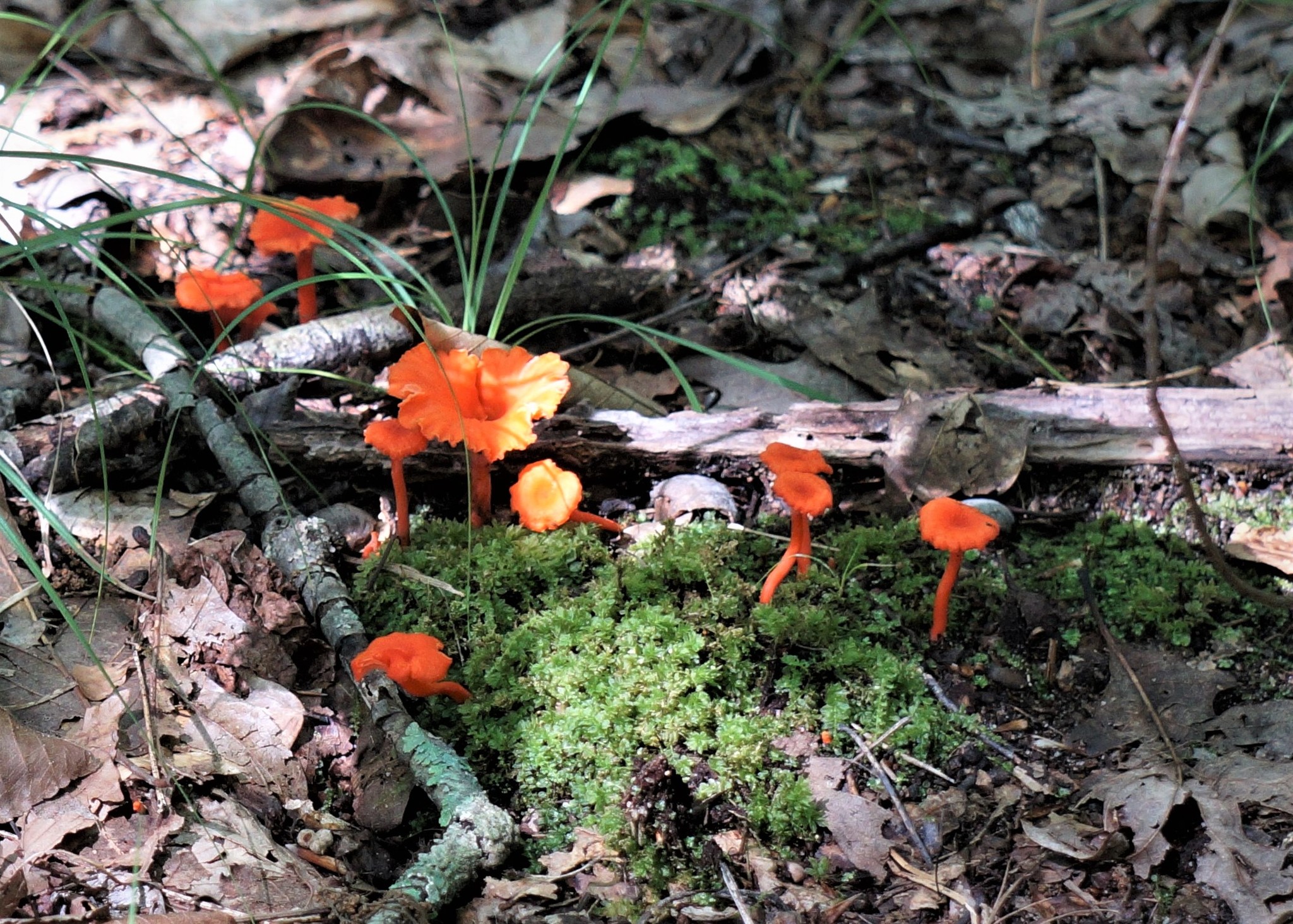Map Snapshot





















280 Records
Seasonality Snapshot
Source: Wikipedia
| Cantharellus cinnabarinus | |
|---|---|

| |
| Scientific classification | |
| Domain: | Eukaryota |
| Kingdom: | Fungi |
| Division: | Basidiomycota |
| Class: | Agaricomycetes |
| Order: | Cantharellales |
| Family: | Cantharellaceae |
| Genus: | Cantharellus |
| Species: | C. cinnabarinus
|
| Binomial name | |
| Cantharellus cinnabarinus (Schwein.) Schwein. 1832
| |
| Synonyms | |
|
Agaricus cinnabarinus Schwein. 1822 | |
| Cantharellus cinnabarinus | |
|---|---|
| Ridges on hymenium | |
| Cap is infundibuliform | |
| Hymenium is decurrent | |
| Stipe is bare | |
| Spore print is white to pink | |
| Ecology is mycorrhizal | |
| Edibility is edible | |
Cantharellus cinnabarinus, the red chanterelle, is a fungus native to eastern North America.[1] It is a member of the genus Cantharellus along with other chanterelles. Its distinctive red color is imparted by the carotenoid canthaxanthin. It is considered edible and good, fruiting in association with hardwood trees in the summer and fall.[2]
Etymology
[edit]It is named after cinnabar, which has a similar red color.[citation needed]
Description
[edit]Cantharellus cinnabarinus is recognized by its distinctive flamingo-pink to bright orange and red colors (imparted by the carotenoid canthaxanthin)[3] and the presence of false gills underneath the cap.[4]
It resembles some other species of Cantharellus, but tends to be more small and slender.[5]
Distribution and habitat
[edit]Widely distributed in Eastern Northern America, it can be found from June to October, mostly on the ground in broadleaf and mixed broadleaf/conifer forests. It usually occurs scattered or in small groups.[5] It forms mycorrhizal associations with forest trees and shows preference for acidic soils.[6]
References
[edit]- ^ Kuo, M. (June 2003). "Cantharellus cinnabarinus". MushroomExpert.Com. Retrieved 2011-03-23.
- ^ Miller Jr., Orson K.; Miller, Hope H. (2006). North American Mushrooms: A Field Guide to Edible and Inedible Fungi. FalconGuides. Guilford, CN: Globe Pequot Press. p. 333. ISBN 978-0-7627-3109-1.
- ^ Haxo, Francis (Dec 1950). "Carotenoids of the Mushroom Cantharellus cinnabarinus". Botanical Gazette. 112 (2): 228–32. doi:10.1086/335653. JSTOR 2472791. S2CID 84308852.
- ^ "Cantharellus cinnabarinus". MushroomExpert.Com. Retrieved 2021-04-04.
- ^ a b Audubon (2023). Mushrooms of North America. Knopf. p. 95. ISBN 978-0-593-31998-7.
- ^ "Chanterelle – Identification, Distribution, Edibility, Ecology, Sustainable Harvesting". Galloway Wild Foods. Retrieved 2021-04-04.
External links
[edit]
